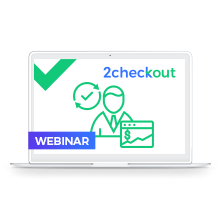In the world of B2B SaaS, more and more data is available on what type of churn, or recession rates, are average and what kinds of rates are “acceptable.”
It’s business 101 that finding a new subscriber always costs more than keeping one. However, unacceptable churn rates can cost much, much more. Keeping your churn rate as low as possible is a crucial goal for the health of your business. Unfortunately, terms like “as low as possible” are pretty subjective. What does that really mean?
Success starts with defining both parts of the question: “What is SaaS churn and what’s acceptable?”
Average SaaS Churn
According to Pacific Crest’s Private SaaS Survey Results, top performing private SaaS companies have a 5.6% annual churn rate vs. 10.6% the median number for the rest of the companies surveyed.
Please carefully note the time dimension – there is a difference between the monthly and annual rates. If your company had a monthly churn of 5% that would scale up to an annual churn of 46% — meaning that almost half of all of your existing customers at the beginning of the year will exit stage after twelve months. Of course, you would be getting new customers all the while, but even then, eventually it’s going to be too difficult to gain enough new customers to grow with a churn rate so high. No business can afford numbers like that for very long.
Bonus: Learn how to combat churn with specific marketing, commerce and payments tactics and tools.
Know Your Churn and What It Means
If you don’t already know how to calculate your churn definitively, it’s imperative that you learn how to do it. And fast.
On a high level, the churn rate formula looks like this:

Where the number of churned customers is how many clients have left your service over the period out of the total number of customers you had during the period. That seems pretty straightforward, but how exactly you define those two numbers can greatly affect the output.
For example, for any given period, you have customers that signed-up prior to that period, new customers during the period and newly churned customers during that same period. The contract period is also important (is your subscription monthly, annual, etc.). You also need to define the moment of churn – is it when the subscription ends but the renewal doesn’t happen or is it at the moment of cancellation?
Other factors to consider are the time frame you are looking at (month, quarter, year), customer segments and other factors that may be specific to your business. There will be differences in calculations between customer cohorts (not just segments), newer customers are churning at a higher rate than older customers and so on. Look at longer-term trends, since seasonal or one-time events can shift the numbers on way or the other. You’ll probably be able to understand seasonality well once you’ve gone through several cycles. And beware that this simplified formula doesn’t capture all of this complexity.
While you’re figuring out the calculations and what makes most sense to you, be sure that you are consistent in your calculations. If you always speak in terms of annual churn for a certain segment, don’t suddenly compare that with your monthly churn for your overall business. This is an exaggeration, but you get my point as it could lead to a great deal of confusion.
Different Kinds of SaaS Churn
Of course, every SaaS business will have a different level of acceptable churn, and even within a business, there may be different customer segments that churn at different rates. If your churn rate for customers on lower-priced plans is slightly high, that’s not a huge cause for concern if you have acceptable churn for those on your more expensive plans.
At the same time, look at what you can improve for each segment. For example, for lower-priced plans, reduce sales friction in order to boost acquisition, improve self-service onboarding and reduce overall CAC (Cost of Acquisition). Automate the processes as much as possible until a certain threshold is met.
For some businesses, it may make more sense to look at revenue churn than user churn, especially if you have a wide variety of plans.
If your revenue churn is intolerably high, that likely means you are not doing enough to keep the customers who matter most to you. If that’s the case, it may be worth investing more resources and personnel into key account management. Identify a per-customer revenue number that designates a “key account,” and keep in regular touch with the subscribers who meet that number.
The customers who are paying you more have likely done their research and view your service as an investment. In efforts to decrease churn, and assuming limited time and resources, it only makes sense for you to invest more in them first rather than attempting to increase retention across the board (though that’s the ultimate goal).
Common Causes of Intolerable Churn & How to Counteract Them
One of the most likely culprits of unacceptable churn stems from selling to the wrong customers.
“There will be many times when you can sell to someone who isn’t really a great fit. In SaaS, selling to the wrong customers will actually kill your business,” Lincoln Murphy |
In a mad dash to add new subscribers, many B2B SaaS providers start looking in all of the wrong places. Smart marketers are working with very detailed and specific buyer personas to properly target and attract ideal segments of the population and essentially ignore everyone else. The more you know about your ideal subscriber, the easier it will be to offer content, updates and interactions that seduce them into sticking around for the long haul.
Understanding what makes users stick with your SaaS product is part of the optimization process. Think about it as reverse engineering. If you know what drives stickiness, you will know more about whom to target and what to change in your support or even in your product.
More concretely, try to uncover differences between the users who churn and the users who stick around. Pay attention to those red flags that you may not have been aware of. SaaS start-up Groove did this successfully; they looked at some Red Flag Metrics (RFMs) that were specific to them and lowered churn by 71% through data-driven actions.
Other common causes of churn include over-promising and under-delivering, focusing more on price than on value and wasting opportunities to perform exit interviews. These could either (a) win clients back or (b) give insights on what (specifically) you can work on to keep subscribers around longer, and with greater satisfaction.
Of course, don’t limit your churn-reducing tactics to flight risk customers. Always look to improve engagement and usage for your most loyal customers, too.
Reduce Churn. Maximize Renewals
Your churn rate can be broken down and calculated in an almost infinite number of ways, but don’t get bogged down in the complexity. Choose how you will calculate your churn and then stick to it. This number is a key indicator of how well you are serving your subscribers, and efforts to decrease it will inevitably also lead to improved service for all of your customers. And this means more opportunities for cross-selling and up-selling, and more referrals.
SaaS businesses face unique customer retention challenges and for some, churn is a given. But it’s crucial to know if your churn rate has entered the danger zone, and take steps to reverse the trend.
To learn more about these challenges and discover proven retention and renewal strategies that prevent customers from canceling their subscriptions, check out this webinar!






